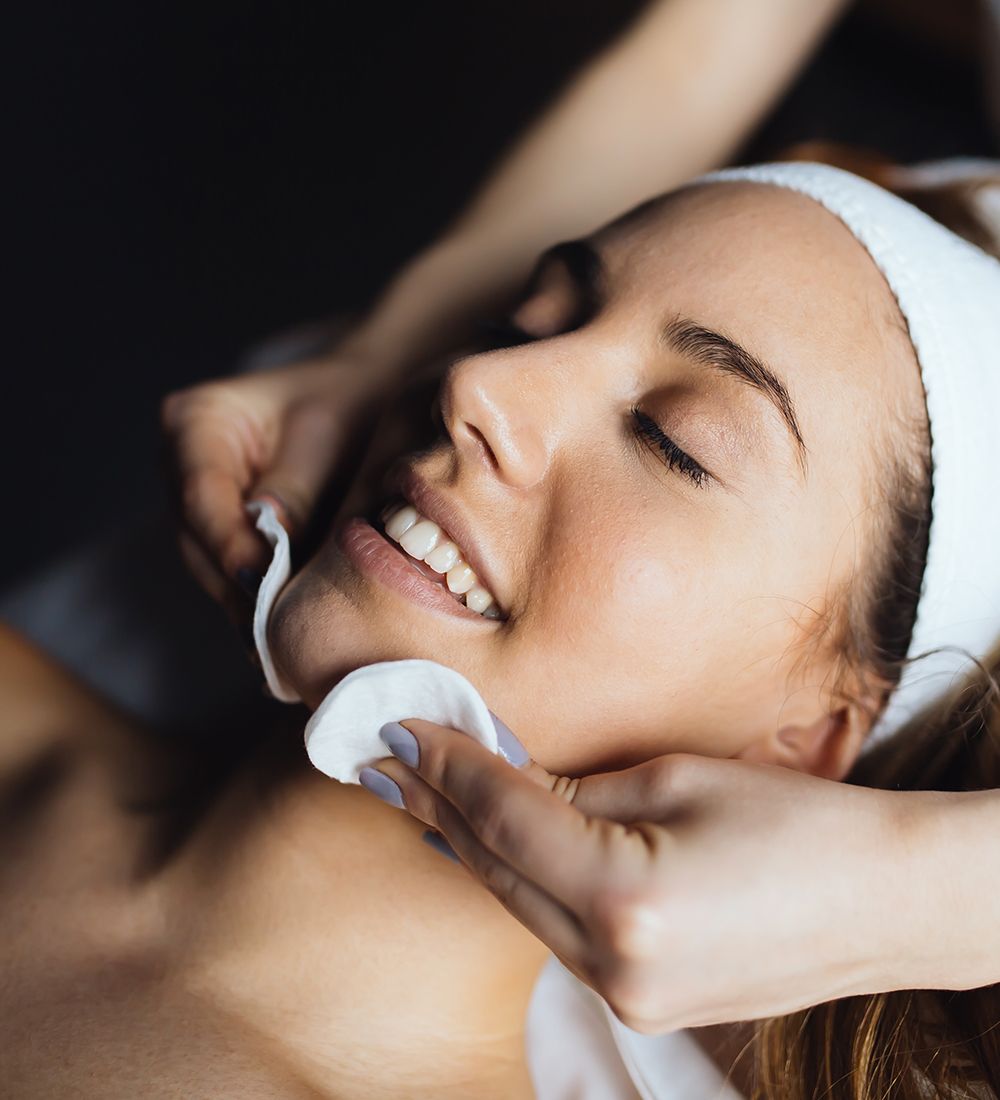How can I see if the difference is due to treatment or a better lifestyle?
Look at the lines in the non treated area between the nose and mouth (nasolabial lines) in the non smiling photograph to compare the effects of aging as a result of lifestyle such as sun exposure, diet, stress and smoking.
There is very little difference in the depth of lines in each twin. This suggests that they have both been exposed to similar environmental factors which impact on aging.
One may assume that the reduced lines in the upper face of the treated twin is as a result of treatment and not as a result of a less aging lifestyle.
“The earlier you start the less aging effects and wrinkles will be evident”.
This answer is supported by a study conducted over 13 years of identical twins by Dr William J Binder.
This study looks at the long term effect of regular (2-3 times a year) wrinkle relaxing injections compared with only two treatments in the 13 years. Further studies are being conducted on identical twins to further assess this as this study only looks at one set of twins.
Treatment in each twin
Twin 1 – Treated twin : – Treatment consisted of
a) Frown and forehead region 2-3 times a year for 13 years
b) Crow’s feet – 2 times in the two years prior to the photographs.
Twin 2 – Untreated twin
A ) Glabella and forehead regions 2 times only, 7 and 2 years prior to the photographs.
Is the Treatment More or Less Effective Over Time?
In the treated twin the clinical effect was consistently sustained for at least 6 months and the duration of effect did not diminish with repeated treatments. The dosage also remained stable over the 13 years of treatment.
There are reports in the literature showing that, compared to a single treatment, repeat injections may enhance response rates and prolong duration of action.
Conclusion
Long-term treatment with wrinkle relaxing injections can prevent the development of imprinted facial lines that are visible at rest. Such treatment is well tolerated, with no adverse events reported during 13 years of regular treatment in this study.
Reference
Lack of Forehead and Glabella Lines after Long-Term Botulinum Toxin Type A Treatment: A Comparison in Identical Twins by William J Binder, MD, FACS Beverly Hills, California
- Carruthers J, Fagien S, Matarasso SL, and the Botox Consensus Group. Consensus recommendations on the use of botulinum toxin type A in facial aesthetics. Plast Reconstr Surg 2004;114(6 Suppl): 1S-22S.
- Carruthers A, Carruthers J, Said S. Dose-ranging study of botulinum toxin type A in the treatment of glabellar rhytids in females. Dermatol Surg 2005;31:414-22.
- Carruthers A, Carruthers J. Prospective, double-blind, randomized, parallel-group, dose-ranging study of botulinum toxin type A in men with glabellar rhytids. Dermatol Surg 2005;31:1297-303.
- Carruthers A, Carruthers J, Cohen J. A prospective, double-blind, randomized, parallel-group, dose- ranging study of botulinum toxin type A in female subjects with horizontal forehead rhytides. Dermatol Surg 2003;29:461-7.
- Carruthers JA, Lowe NJ, Menter MA, et al. A multicenter, double-blind, randomized, placebo- controlled study of the efficacy and safety of botulinum toxin type A in the treatment of glabellar lines. J Am Acad Dermatol 2002;46:840-9.
- Carruthers JD, Lowe NJ, Menter MA, et al. Double-blind, placebo-controlled study of the safety and efficacy of botulinum toxin type A for patients with glabellar lines. Plast Reconstr Surg 2003;112(suppl):21S-32S.
- Lowe NJ, Ascher B, Heckmann M, et al. Double-blind, randomized, placebo-controlled, dose- response study of the safety and efficacy of botulinum toxin type A in subjects with crow’s feet. Dermatol Surg 2005;31:257-62.
- Lowe NJ, Lask G, Yamauchi P, Moore D. Bilateral, double-blind, randomized comparison of 3 doses of botulinum toxin type A and placebo in patients with crow’s feet. J Am Acad Dermatol 2002;47:834-40.
- Keen M, Blitzer A, Aviv J, et al. Botulinum toxin A for hyperkinetic facial lines: results of a double- blind, placebo-controlled study. Plast Reconstr Surg 1994;94:94-9.
- Carruthers A, Carruthers J, Lowe NJ, et al. One-year, randomised, multicenter, two-period study of the safety and efficacy of repeated treatments with botulinum toxin type A in patients with glabellar lines. J Clin Res 2004;7:1-20.
- Carruthers JD, Carruthers JA. Treatment of glabellar frown lines with C. botulinum-A exotoxin. J Dermatol Surg Oncol 1992;18:17-21.
- Sommer B, Zschocke I, Bergfeld D, et al. Satisfaction of patients after treatment with botulinum toxin for dynamic facial lines. Dermatol Surg 2003;29:456.
- Foster JA, Barnhorst D, Papay F, Oh PM, Wulc AE. The use of botulinum A toxin to ameliorate facial kinetic frown lines. Ophthalmology 1996;103:618-22.
- Kowalski J, Ravelo A, Saulay M, et al. Patient self-perceptions and satisfaction with botulinum toxin type A treatment for moderate to severe crow’s feet: results from a placebo-controlled clinical study. Poster presented at the Academy ’05 meeting of the American Academy of Dermatology, July 20-24, 2005, Chicago, IL.
- Stotland MA, Kowalski JW, Ray BR, et al. Patient-reported benefit and satisfaction with botulinum toxin type A treatment of moderate to severe glabellar rhytids: results from a prospective open- label study. Poster presented at the Academy ’05 meeting of the American Academy of Dermatology, July 20-24, 2005, Chicago, IL.




